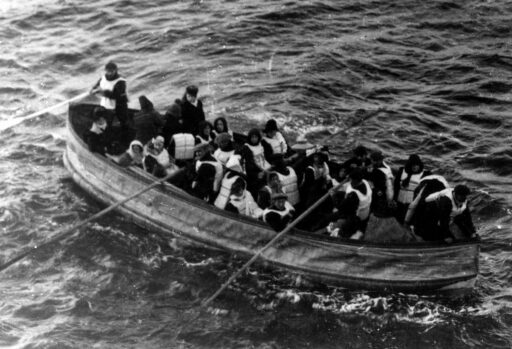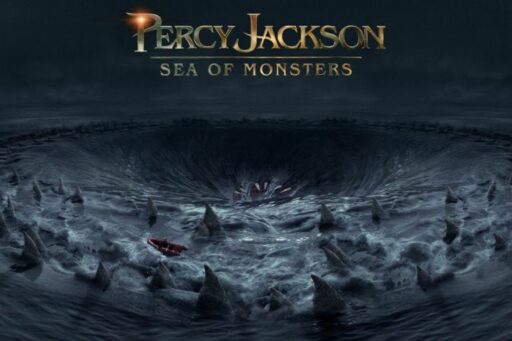The movie ’83 stands as a cinematic homage to one of the most iconic moments in Indian sports history – the Cricket World Cup victory in 1983. Directed by Kabir Khan, this sports drama encapsulates the passion, drama, and sheer unexpected triumph of the Indian cricket team, known affectionately as Kapil’s Devils. The film promises to take audiences on a nostalgic journey back to the day when India etched its name into cricketing lore and inspired a nation.
Key Takeaways
- The movie ’83’ is a tribute to India’s historic 1983 Cricket World Cup win, directed by Kabir Khan and featuring a star-studded cast portraying the real-life cricket heroes.
- Kabir Khan’s vision for ’83’ focuses on authenticity, aiming to recreate the emotional and triumphant journey of the Indian cricket team, capturing the essence of the era with meticulous detail.
- The film’s cultural impact is significant as it revives the collective memory of India’s first World Cup victory, influencing Indian cinema and celebrating the legacy of Kapil Dev’s team.
- Despite the sports anthem ‘Lehra Do’ not making a significant impact, the soundtrack of ’83’ plays a crucial role as a narrative tool, enhancing the storytelling and audience engagement.
- Audience and critical reception of ’83’ are varied, with the box office performance, critics’ reviews, and social media buzz reflecting a diverse range of opinions and emotional responses.
Recreating the Magic of 1983

The Star Cast and Their Counterparts
The casting of ’83’ was a meticulous process, aimed at finding the perfect blend of acting prowess and physical resemblance to the real-life cricket heroes of India’s 1983 World Cup team. The ensemble cast not only had to look the part but also embody the spirit and mannerisms of the legendary players they were portraying.
- Ranveer Singh stepped into the shoes of Kapil Dev, the charismatic captain who led the team to victory.
- Harrdy Sandhu brought to life the role of Madan Lal, whose all-round performance was pivotal in the tournament.
- Tahir Raj Bhasin played the stylish Sunil Gavaskar, whose technique and temperament set him apart.
- Jiiva reprised the role of Krishnamachari Srikkanth, known for his aggressive batting style.
The actors underwent rigorous training to perfect their cricketing skills, ensuring that the on-screen action was as authentic as the real matches from the 1983 tournament. The dedication to authenticity extended beyond the cricket field, with the cast members immersing themselves in the era’s culture and the personal lives of the cricketers they represented.
Authenticity in Storytelling
The ’83 movie not only celebrates a historic moment in Indian sports but also sets a benchmark in authentic storytelling. The filmmakers went to great lengths to ensure that the portrayal of events was as true to reality as possible, meticulously recreating the era’s ambiance and the players’ mannerisms.
- The use of real match footage blended with the re-enacted scenes.
- Attention to the minutest details, from the cricketing gear to the players’ looks.
- Dialogues that reflect the spirit and camaraderie of the 1983 team.
The emotional resonance of the film is amplified by its commitment to authenticity, making it more than just a retelling; it’s a re-living of a cherished chapter in Indian history.
The dedication to authenticity in ’83 is a testament to the filmmakers’ respect for the source material and their understanding of its significance to the Indian audience. It’s a crafted narrative that honors the legacy of the cricket legends and invites the audience to experience their journey firsthand.
The Emotional Journey of the Characters
The film ’83 goes beyond the boundaries of a typical sports drama, delving deep into the emotional journey of its characters. It’s not just about the cricket matches or the final victory; it’s about the personal battles, the struggles, and the triumphs of the individuals who made history.
- From overcoming injuries to dealing with personal demons, the narrative captures the essence of what it means to be part of a team fighting for a common dream.
- The portrayal of each character’s backstory adds a layer of depth, making their achievements on the field all the more resonant with the audience.
- The actors’ performances bring to life the emotional highs and lows, allowing viewers to empathize with the characters’ journeys.
The film masterfully showcases the human side of the sport, reminding us that behind every athlete is a story of perseverance and resilience.
Behind the Scenes and On-Screen Brilliance

Kabir Khan’s Vision for ’83
Kabir Khan embarked on a cinematic journey to recreate one of the most celebrated events in Indian cricket history. His vision was to craft a film that not only depicted the triumph but also the spirit and the emotions of the 1983 World Cup victory. The director, known for his work in ‘Bajrangi Bhaijaan’, was set to bring this story to life after completing ‘Tubelight’.
The ensemble cast, led by Ranveer Singh as Kapil Dev, was meticulously chosen to reflect the diversity and talent of the original team members. Each actor was tasked with embodying the essence of the cricket legends they portrayed, ensuring an authentic and powerful performance.
The film ’83 is not just a retelling of a historic win; it’s a celebration of collaboration, synergy, and aspiration. It serves as a poignant reminder that unity and teamwork are the cornerstones of greatness.
Kabir Khan’s dedication to period accuracy extended to the brand tie-ups and sponsorships, which were carefully selected to align with the 1983 setting. This attention to detail was crucial in delivering an immersive experience for the audience.
The Making of a Sports Drama
The making of ’83 was a meticulous process that involved capturing the essence of one of the most celebrated events in Indian cricket history. Directed by Kabir Khan, the film aimed to recreate the journey of underdogs winning the World Cup, with a focus on authenticity and emotional depth. The production team’s commitment to detail saw them shooting at various locations to ensure the film’s realism.
To bring the 1983 World Cup victory to life, the filmmakers assembled a diverse team of actors, technicians, and sports consultants. The casting was a critical aspect, as the actors needed to not only resemble their real-life counterparts but also embody their spirit and cricketing style.
The dedication to authenticity extended to the smallest details, from the cricketing gear to the locations, mirroring the era’s look and feel.
The film’s narrative goes beyond the cricket field, delving into the personal struggles and triumphs of the players. It explores themes of unity and determination, resonating with the audience on a deeper level.
Cinematography and Period Accuracy
The cinematography of ’83 not only captures the essence of cricket but also meticulously recreates the era it represents. The attention to detail in the film’s visual narrative is a testament to the crew’s dedication to authenticity. When scouting a location, the set decorator finds ways to hide the things that don’t belong in the era of the film. This normally starts with taking down modern signage and replacing it with period-appropriate elements.
The production team’s efforts to achieve period accuracy extended to brand tie-ups that make sense and match with the timeline of the film. The visual effects play a crucial role in enhancing the storytelling, seamlessly integrating the past with the present to offer the audience a nostalgic yet fresh experience.
The challenge of transporting viewers back to 1983 was met with a combination of practical effects, careful set design, and digital wizardry. The result is a cinematic experience that feels both authentic and engaging.
The Cultural Impact of India’s 1983 World Cup Victory

A Nation’s Collective Memory
The 1983 World Cup victory is not just a milestone in Indian cricket history; it’s a cornerstone of the nation’s collective memory. Cricket in India transcends the mere sport, becoming a symbol of unity and national pride. The triumph of Kapil Dev’s team became a metaphor for India’s potential, inspiring a sense of solidarity and sacrifice across the country.
The victory served as a genesis for a united India, a concept that often seems utopian. It demonstrated that excellence in sports could indeed parallel societal cohesion, bringing together people from all walks of life.
Films like ’83 not only celebrate the idea of India but also remind us of the inherent unity in diversity that strengthens the nation. The cultural impact of the 1983 World Cup victory continues to resonate, influencing cinema and instilling a sense of what it means to be Indian.
Influence on Indian Cinema
The 1983 World Cup victory not only galvanized the nation but also left an indelible mark on Indian cinema. The triumph served as a catalyst for a series of sports-centric films, inspiring narratives that celebrate underdog victories and collective triumphs. The victory’s influence extended beyond mere storytelling; it altered the very fabric of content creation within the industry.
The strategic partnerships formed in the wake of India’s cricketing success aimed to elevate the quality of cinematic content. This shift was not just about producing more sports dramas but about enhancing the diversity and depth of Indian cinema as a whole. The industry began to embrace a wider array of genres, from cutting-edge independent projects to international cult movies, reflecting a newfound confidence spurred by the cricket victory.
The 1983 World Cup win was not just a victory on the field; it was a victory for Indian storytelling, igniting a passion for narratives that resonate with the spirit of that historic event.
The Legacy of Kapil Dev’s Team
The 1983 World Cup victory under Kapil Dev’s captaincy is not just a celebrated moment in Indian cricket history, but a transformative event that reshaped the nation’s sporting landscape. Kapil Dev’s all-round performance was pivotal in clinching the title for India. His leadership galvanized a team of underdogs to achieve the unimaginable, inspiring a generation to believe in their dreams.
The legacy of Kapil Dev’s team extends beyond the boundaries of the cricket field. It is a testament to the power of teamwork, perseverance, and national pride.
The statistics of Kapil Dev during the tournament speak volumes of his contribution:
- 303 runs scored
- 12 wickets taken
- 7 catches held
This victory was not just about the numbers; it was about the indomitable spirit and the collective will of a team that dared to dream big. The echoes of this triumph are still felt today, as it laid the foundation for India’s future successes in international cricket.
The Soundtrack of ’83: Anthems and Melodies

The Sports Anthem ‘Lehra Do’
The sports anthem ‘Lehra Do’ from the movie ’83’ aimed to capture the spirit of the Indian cricket team’s journey to the World Cup final. Voiced by Arijit Singh, the song was released with high expectations but fell short of making a significant impact. Despite the powerful vocals, the anthem struggled to resonate with the audience as anticipated.
The lyrics, penned by Sameer, were crafted as a tribute to the game of cricket. However, the reception of ‘Lehra Do’ was mixed, with some fans feeling it lacked the emotional punch required for a sports anthem.
The journey of Ranveer Singh and his squad, as depicted in the anthem, was meant to be a rallying cry for the team spirit and national pride.
While the song did not soar in popularity, it remains a part of the film’s narrative, attempting to echo the underdog story that the 1983 cricket team embodied.
Music as a Narrative Tool
The soundtrack of ’83’ not only complements the on-screen action but also serves as a powerful narrative tool. Through instrumentation, melody, and rhythm, the film’s score guides the audience through the emotional highs and lows of the story, much like the Indian cricket team’s journey in the World Cup. The music’s role in enhancing the storytelling dynamics is pivotal, as it subtly underscores the drama and triumphs of the characters.
- The sports anthem ‘Lehra Do’ encapsulates the spirit of the era and the team’s underdog status.
- Background scores during crucial match scenes amplify the tension and excitement.
- Emotional tracks resonate with the characters’ personal struggles and victories.
The music of ’83’ weaves together the threads of nostalgia, patriotism, and the collective aspirations of a nation. It’s not just about the notes played, but the memories and emotions they invoke.
Audience Reception and Critique
The ’83 movie has garnered significant attention from audiences and critics alike, with a strong emotional resonance among viewers. The film’s portrayal of India’s historic cricket victory has struck a chord, leading to an outpouring of responses across various platforms.
- Rotten Tomatoes: 83% positive reviews from approved critics
- Audience Score: Over 2,500 verified ratings
The film’s success is not just a measure of its entertainment value, but also its ability to capture the essence of a nation’s pride.
The audience’s engagement with the film extends beyond mere viewership; it has sparked discussions, nostalgia, and a renewed interest in the events of 1983. The movie’s impact is evident in the way it has been embraced by fans, with social media buzzing with anecdotes, praise, and critiques.
Critical Reception and Audience Response

Box Office Performance
Despite the film industry’s resurgence with blockbusters and indie films alike, the box office performance of ’83’ was a topic of much discussion. The film, which aimed to capture the hearts of a nation by revisiting a cherished historical moment, faced the challenge of translating emotional resonance into commercial success.
In the context of recent box office trends, ’83’ was released during a period of cautious optimism. March 2024 was projected to outperform its predecessor, with films from the previous year earning a total of 260.59 crores. The expectation was that the 12 films released in March 2024 could match or exceed this figure, provided they garnered positive word of mouth.
While box office numbers are often seen as the ultimate measure of a film’s success, they do not always reflect the depth of impact a movie can have on its audience.
’83’ aimed to not just entertain, but also to inspire and evoke a sense of pride. Its performance at the box office, therefore, was not just about numbers, but about the memories it reignited and the legacy it celebrated.
Critics’ Reviews and Ratings
The critical reception of ’83 has been a mixed bag, with some reviewers praising the film for its emotional depth and others critiquing it for various aspects. The consensus, however, highlights the movie’s ability to evoke nostalgia and celebrate a historic moment in Indian sports.
While some critics have pointed out that the film’s success should not be solely judged by its box office numbers, the ratings have been a significant indicator of its reach and impact. The film has been rated across various platforms, reflecting a diverse range of opinions.
The essence of cinema goes beyond mere numbers; it’s about the lives it touches and the stories it tells.
Here’s a snapshot of the ratings from different sources:
| Source | Rating |
|---|---|
| IMDb | 7.8/10 |
| Rotten Tomatoes | 83% |
| BookMyShow | 4.5/5 |
These ratings, while not exhaustive, provide a glimpse into the film’s reception among critics and audiences alike.
Fan Reactions and Social Media Buzz
The release of ’83 sparked a wave of nostalgia and pride across social media platforms, as fans shared their own memories and experiences of India’s historic win. The emotional resonance of the film was palpable, with many expressing how it beautifully captured the spirit of the 1983 World Cup victory.
- Twitter erupted with hashtags like #83TheFilm and #KapilDev, trending for days.
- Instagram saw a surge in posts featuring movie clips, iconic scenes, and fan art.
- Facebook groups dedicated to cricket enthusiasts were abuzz with discussions and debates about the film’s accuracy and impact.
The collective engagement on social media not only amplified the film’s reach but also reignited the passion for cricket among the younger generation.
The digital echo chamber reflected a diverse audience, drawing parallels to how social media platforms played a key role in the resurgence of other films through meme culture. The financial success and merchandise sales of ’83 are a testament to its lasting popularity, much like the unexpected revival of ‘Bee Movie’.
Conclusion
As the curtains fall on the cinematic spectacle that is ’83, audiences are left with a profound sense of nostalgia and pride. The film is not just a retelling of a historic event; it is a heartfelt tribute to the undying spirit of a team that defied all odds to bring glory to their nation. Director Kabir Khan’s meticulous attention to detail and the ensemble cast’s compelling performances have resurrected the magic of India’s 1983 World Cup victory, making it an unforgettable experience for both cricket enthusiasts and moviegoers alike. ’83’ is more than a movie; it’s a celebration of a milestone that shaped India’s cricketing legacy, ensuring that the triumphs of Kapil Dev and his team will continue to inspire generations to come.
Frequently Asked Questions
What is the movie ’83 about?
The movie ’83 is a sports drama directed by Kabir Khan that recounts the historic victory of the Indian cricket team in the 1983 World Cup, showcasing the events and emotions that led to this monumental win.
Who stars in ’83 and who do they portray?
Ranveer Singh leads the star-studded cast portraying Kapil Dev, with other actors like Jiiva, Saqib Saleem, and Harrdy Sandhu playing key team members like Krishnamachari Srikkanth, Mohinder Amarnath, and Madan Lal, respectively.
What does Sunil Gavaskar say about the 1983 World Cup victory?
Sunil Gavaskar considers watching Kapil Dev lift the 1983 World Cup trophy as the most memorable moment of his life, signifying the importance of this triumph in Indian cricket history.
Has the film ’83 received any endorsements from the cricketing community?
Yes, Vikram Man Singh, the son of the manager of the 1983 World Cup-winning team, has praised the movie for its attention to detail, and the cricketing legends have also shown their support.
What is the significance of the sports anthem ‘Lehra Do’ in ’83?
The sports anthem ‘Lehra Do’ is a musical piece in ’83, sung by Arijit Singh, that encapsulates the journey of the Indian cricket team to the World Cup final, although it reportedly did not make a significant impact.
What has been the audience’s reaction to ’83?
The audience has expressed excitement and anticipation for ’83, with tributes pouring in for the 1983 World Cup-winning team on the 40th anniversary, highlighting the film’s cultural significance.






